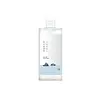What's inside
What's inside
 Key Ingredients
Key Ingredients

No key ingredients
 Benefits
Benefits

 Ingredients Side-by-side
Ingredients Side-by-side

Water
Skin ConditioningDipropylene Glycol
HumectantGlycerin
HumectantPolyglyceryl-4 Caprate
Emulsifying1,2-Hexanediol
Skin ConditioningSea Water
HumectantHyaluronic Acid
HumectantHydrolyzed Hyaluronic Acid
HumectantSodium Hyaluronate
HumectantPanthenol
Skin ConditioningAllantoin
Skin ConditioningCeramide NP
Skin ConditioningPentylene Glycol
Skin ConditioningC12-14 Pareth-12
EmulsifyingCaprylyl Glycol
EmollientEthylhexylglycerin
Skin ConditioningButylene Glycol
HumectantTocopherol
AntioxidantDisodium EDTA
Water, Dipropylene Glycol, Glycerin, Polyglyceryl-4 Caprate, 1,2-Hexanediol, Sea Water, Hyaluronic Acid, Hydrolyzed Hyaluronic Acid, Sodium Hyaluronate, Panthenol, Allantoin, Ceramide NP, Pentylene Glycol, C12-14 Pareth-12, Caprylyl Glycol, Ethylhexylglycerin, Butylene Glycol, Tocopherol, Disodium EDTA
Water
Skin ConditioningPolyglyceryl-10 Laurate
Skin Conditioning1,2-Hexanediol
Skin ConditioningPentylene Glycol
Skin ConditioningPolyglyceryl-4 Caprate
EmulsifyingButylene Glycol
HumectantGlycerin
HumectantMelaleuca Alternifolia Leaf Extract
PerfumingHouttuynia Cordata Extract
Skin ConditioningEthylhexylglycerin
Skin ConditioningCentella Asiatica Extract
CleansingSodium Citrate
BufferingCitric Acid
BufferingN-Linolenoyl Serinol
Skin ConditioningBis-Capryloyloxypalmitamido Isopropanol
EmollientPalmitoyl Palmitamide Mea
HumectantVincetoxicum Atratum Extract
Skin ConditioningLeucine
Skin ConditioningValine
MaskingThreonine
Phenylalanine
MaskingLysine
Skin ConditioningWater, Polyglyceryl-10 Laurate, 1,2-Hexanediol, Pentylene Glycol, Polyglyceryl-4 Caprate, Butylene Glycol, Glycerin, Melaleuca Alternifolia Leaf Extract, Houttuynia Cordata Extract, Ethylhexylglycerin, Centella Asiatica Extract, Sodium Citrate, Citric Acid, N-Linolenoyl Serinol, Bis-Capryloyloxypalmitamido Isopropanol, Palmitoyl Palmitamide Mea, Vincetoxicum Atratum Extract, Leucine, Valine, Threonine, Phenylalanine, Lysine
 Reviews
Reviews

Ingredients Explained
These ingredients are found in both products.
Ingredients higher up in an ingredient list are typically present in a larger amount.
1,2-Hexanediol is a synthetic liquid and another multi-functional powerhouse.
It is a:
- Humectant, drawing moisture into the skin
- Emollient, helping to soften skin
- Solvent, dispersing and stabilizing formulas
- Preservative booster, enhancing the antimicrobial activity of other preservatives
Butylene Glycol (or BG) is used within cosmetic products for a few different reasons:
Overall, Butylene Glycol is a safe and well-rounded ingredient that works well with other ingredients.
Though this ingredient works well with most skin types, some people with sensitive skin may experience a reaction such as allergic rashes, closed comedones, or itchiness.
Learn more about Butylene GlycolEthylhexylglycerin (we can't pronounce this either) is commonly used as a preservative and skin softener. It is derived from glyceryl.
You might see Ethylhexylglycerin often paired with other preservatives such as phenoxyethanol. Ethylhexylglycerin has been found to increase the effectiveness of these other preservatives.
Glycerin is already naturally found in your skin. It helps moisturize and protect your skin.
A study from 2016 found glycerin to be more effective as a humectant than AHAs and hyaluronic acid.
As a humectant, it helps the skin stay hydrated by pulling moisture to your skin. The low molecular weight of glycerin allows it to pull moisture into the deeper layers of your skin.
Hydrated skin improves your skin barrier; Your skin barrier helps protect against irritants and bacteria.
Glycerin has also been found to have antimicrobial and antiviral properties. Due to these properties, glycerin is often used in wound and burn treatments.
In cosmetics, glycerin is usually derived from plants such as soybean or palm. However, it can also be sourced from animals, such as tallow or animal fat.
This ingredient is organic, colorless, odorless, and non-toxic.
Glycerin is the name for this ingredient in American English. British English uses Glycerol/Glycerine.
Learn more about GlycerinPentylene glycol is typically used within a product to thicken it. It also adds a smooth, soft, and moisturizing feel to the product. It is naturally found in plants such as sugar beets.
The hydrophilic trait of Pentylene Glycol makes it a humectant. As a humectant, Pentylene Glycol helps draw moisture from the air to your skin. This can help keep your skin hydrated.
This property also makes Pentylene Glycol a great texture enhancer. It can also help thicken or stabilize a product.
Pentylene Glycol also acts as a mild preservative and helps to keep a product microbe-free.
Some people may experience mild eye and skin irritation from Pentylene Glycol. We always recommend speaking with a professional about using this ingredient in your routine.
Pentylene Glycol has a low molecular weight and is part of the 1,2-glycol family.
Learn more about Pentylene GlycolPolyglyceryl-4 Caprate comes from Capric Acid and Polyglycerin-4. It is an emulsifier.
Emulsifiers help stabilize a product. They do this by preventing ingredients from separating, such as oils and water which do not mix naturally.
Water. It's the most common cosmetic ingredient of all. You'll usually see it at the top of ingredient lists, meaning that it makes up the largest part of the product.
So why is it so popular? Water most often acts as a solvent - this means that it helps dissolve other ingredients into the formulation.
You'll also recognize water as that liquid we all need to stay alive. If you see this, drink a glass of water. Stay hydrated!
Learn more about Water